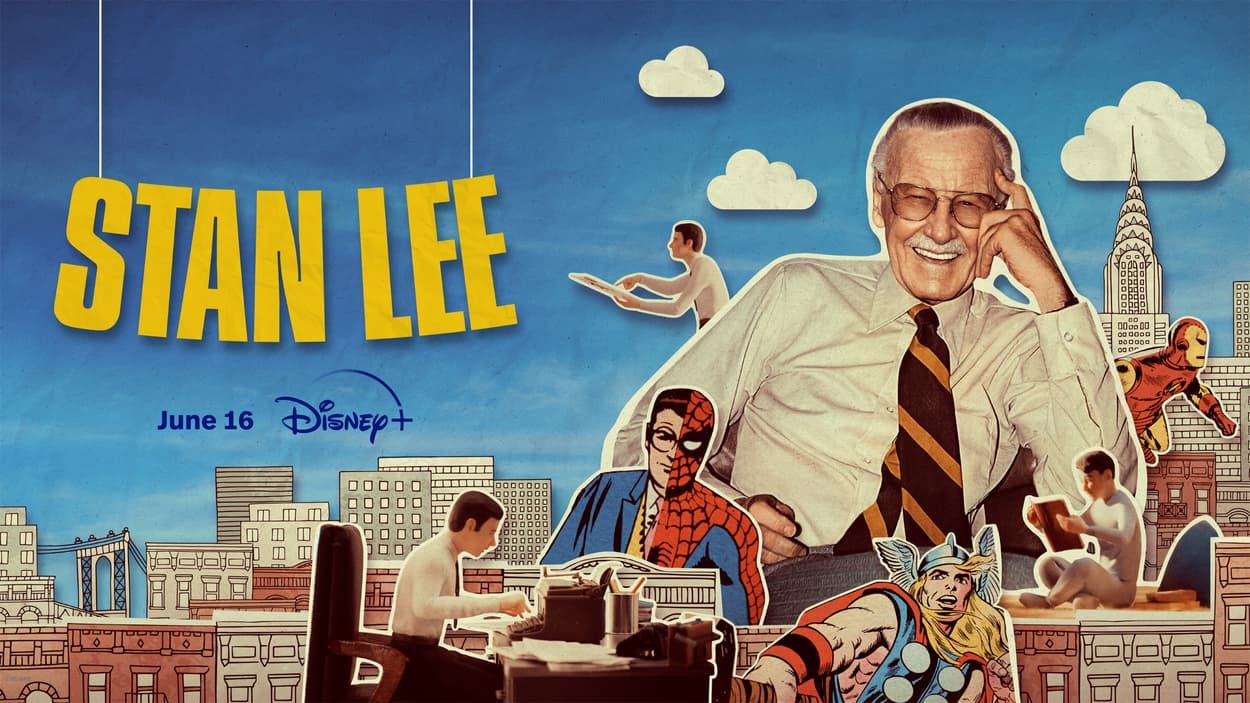
'Stan Lee' Review
 Marvel legend Stan Lee lived to the age of 96. He created some of the most iconic comic book (turned big screen) characters of all-time. He appeared in many of the movies. And he was the face of the entertainment company for most of his life.
Marvel legend Stan Lee lived to the age of 96. He created some of the most iconic comic book (turned big screen) characters of all-time. He appeared in many of the movies. And he was the face of the entertainment company for most of his life.
Stan Lee is one of the most well-known media personalities ever. That mustache. Those glasses. That gravelly, confident voice. So, what DON’T we know about him?
What non-Marvel fanatics will probably learn from the self-titled documentary is maybe a little bit about how Lee got into the comic book world. Maybe a little about the origins of some of the characters. And maybe how he met his wife — all in his own words. But “Stan Lee” is mostly a composite of other interviews Lee gave over the years, with many clips taken from a previous A&E special.
Just as he did with the 2021 Wolfgang Puck documentary for Disney+, director David Gelb allows his title subject to speak for himself, in this case entirely through archival footage. (Lee passed away in 2018.) Much of the opening act of the film is Lee telling stories about his youth, his interest in comics and getting into the business he would forever change. Lacking footage, Gelb uses toy figures, structures and sets to serve as the visuals. It’s a different but not entirely successful device.
Hearing Lee’s perspectives on his life and career is interesting — for awhile. In this very topic-jumping documentary we get his commentary on story development, dialogue, illustration, printing, sales, marketing — pretty much every aspect of the comic book business. How Lee came-up with the idea for “The Fantastic Four”, and the methodology behind Spider-Man, The Hulk and his other iconic creations is fascinating. Lee was a writing machine. He believed he and his Marvel compadres found success in not coming-up with stories to please fans but to please themselves, admitting, “We forgot about the audience.” And some five decades before it became commonplace in movies, Lee was a big proponent of character crossovers in his comics.
But this “Stan Lee” doc is decidedly one-note. There are only a handful of other voices (a 20-second soundbite from current Marvel head honcho Kevin Feige is saved until the end) and almost no drama. The two best moments of conflict involve archive footage of Lee, a DC Comics representative and a comic book fan on a panel talk show debating superheroes and comic books. And there’s an audio clip of a late ‘80s radio call in show featuring Lee and longtime collaborator Jack Kirby in which the two engage in a verbal battle over which one deserves the credit for Marvel’s success.
Gelb relies on bizarre title cards to establish different watershed years of Lee’s career, but they’re arbitrarily chosen, and include clips of world events, most of which have nothing to do with what Lee’s about to discuss. And though the third act montage of Lee’s cameos in Marvel movies is well-done, Gelb rushes to get us there.
Stan Lee was a creative genius, and he remains an iconic figure in pop culture and entertainment. To millions of fans around the world he was a superhero. Unfortunately, “Stan Lee” fails to live up to its subject, by not providing much of anything new or captivating about the man behind Marvel.


